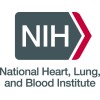
The CASABLANCA Study: Catheter Sampled Blood Archive in Cardiovascular Diseases
AtherosclerosisContrast Induced Nephropathy1 moreThe purpose of this research is to determine the relationship between novel blood tests for heart function (including hormones and heart enzymes measured in the blood), and assess for kidney damage before and after angiography (cardiac catheterization). We hypothesize that these novel tests will enable us to predict possible complications of catheterization immediately after the procedure.

Whole-Body MRA at 3T - A Comparison Between Two Different Scan Protocols
AtherosclerosisIntermittent ClaudicationTo compare to different approaches in whole-body magnetic resonance angiography of patients suffering peripheral arterial disease. Our hypothesis is that use of a new protocol improves the diagnostic quality of the WB-MRA procedure.

Carotid Atherosclerotic Plaque Study
AtherosclerosisFirst, to establish a comparison of the pathophysiology of carotid atherosclerosis and the genetic and environmental variables that cause those plaques to become symptomatic. Second, to differentiate between vulnerable plaque and other types of plaque using ultrasound elastography, MRI data, trans-cranial doppler along with RF (radio frequency) analysis of back-scattered ultrasonic echoes.

Diabetes Genome Project: A Prospective Registry to Identify Genetic Variation Among Diabetic Patients...
Diabetes MellitusInsulin Resistance1 morePrevious scientific research has found multiple genes that affect the risk for developing heart disease or complications during the treatment of heart disease. Less is currently known about how patients with heart disease may differ on the basis of other ailments they may have and how these other ailments may affect their treatment and prognosis. For this reason, researchers at the Mid America Heart Institute are conducting this research to find out how genes affect heart disease and recovery following angioplasty. The study will include patients with diabetes in order to determine if their genes are different from patients without diabetes. A total of 1,607 patients were enrolled. There were 2 groups of patients selected for this study. The first group of patients included into the study will be those that are scheduled to have a diagnostic angiogram only. The second group of patients were those that had along with the angiogram a percutaneous transluminal coronary angioplasty, PTCA and or the use of a device called a coronary "stent", designed to help prop open the artery and to help avoid collapse. Samples for both groups will be stored for 30 years. After this time, all samples will be destroyed. Ultimately, we are hopeful that we will identify genes that will identify groups of patients at risk for heart disease.

Epidemiology of Vascular Inflammation & Atherosclerosis
AtherosclerosisCardiovascular Diseases5 moreTo investigate the relationship of vascular cell phenotypes to atherosclerosis.

Genetic and Environmental Determinants of Triglycerides (GOLDN)
AtherosclerosisCardiovascular Diseases1 moreTo characterize the genetic basis of the variable response of triglycerides to two environmental contexts, one that raises triglycerides (dietary fat), and one that lowers triglycerides (fenofibrate treatment.)

Comparison of Coronary CT Angiography to Invasive Coronary Angiography
AtherosclerosisCoronaryThe purpose of the trial is to investigate the accuracy of coronary CT compared to the conventional "gold standard" cardiac catheterization.

Dietary Antioxidants and Atherosclerosis
AtherosclerosisCardiovascular Diseases2 moreTo examine the role of dietary antioxidants in the etiology of atherosclerosis in both sexes and in whites and Blacks.

Comparison of Asymptomatic Carotid Atherosclerosis Between Frequent and Infrequent Blood Donors...
Carotid AtherosclerosisMyocardial InfarctionIron has been proposed to contribute to atherogenesis in humans by facilitating the oxidation of lipoproteins. This observational study will evaluate the association between frequency of blood donation - expected to be associated with relatively reduced body iron stores in frequent donors - and carotid atherosclerosis. The primary outcome variable will be whether the presence and extent of asymptomatic carotid atherosclerosis as measured by ultrasound is greater in infrequent (less than or equal to 1 donations/year greater than or equal to 5 years) vs. frequent (greater than or equal to 4 donations/year greater than or equal to 5 years) blood donors. Body iron stores, lipid and hemostatic parameters, nitric oxide formation, inflammatory parameters, and markers of vascular oxidative stress will be analyzed as secondary outcome measures. Laboratory analysis and ultrasound testing will be performed blinded to the patient's phlebotomy and iron status. Sixty frequent (n=40 males greater than 40 y/o, n=20 females greater than 50 y/o) and 60 infrequent (n=40 males greater than 40 y/o, n=20 females greater than 50 y/o) blood donors will be recruited for this study from the Department of Transfusion Medicine, W. G. Magnuson Clinical Center. All donors will be assessed for study eligibility and cardiovascular risks during the screening visit. The presence of atherosclerotic lesions by carotid ultrasound and secondary outcome parameters will be assessed during a second visit.

Cardiac MR of Subclinical CVD: Impact of Age
AtherosclerosisHeart Diseases3 moreTo use magnetic resonance imaging to identify subclinical atherosclerosis and left ventricular hypertrophy in the Framingham Heart Study cohort.
